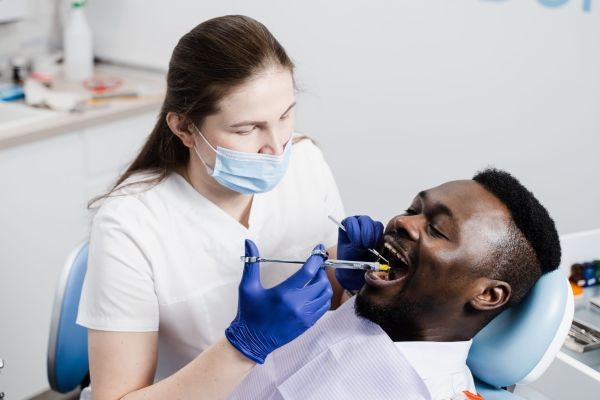The dental anesthetics market has witnessed significant growth in recent years, driven by increasing dental procedures, technological innovations, and rising patient awareness regarding pain-free treatments. Dental anesthetics, including local anesthetics, general anesthetics, and sedation agents, play a pivotal role in ensuring patient comfort and safety during dental interventions. This article provides a comprehensive summary of the dental anesthetics market, exploring market dynamics, trends, challenges, and future growth opportunities.
Market Overview
Dental anesthetics are chemical agents used to induce temporary loss of sensation in targeted areas of the oral cavity or the entire body. The primary aim is to manage pain, reduce patient anxiety, and facilitate complex dental procedures such as extractions, root canals, and oral surgeries. Local anesthetics, such as lidocaine and articaine, dominate the market due to their rapid onset and minimal systemic side effects. On the other hand, general anesthetics and intravenous sedation are preferred for extensive surgical procedures or patients with high dental anxiety.
The global dental anesthetics market has expanded steadily owing to the rise in dental tourism, increasing prevalence of oral diseases, and a surge in elective cosmetic dental procedures. Furthermore, government initiatives promoting oral health awareness and insurance coverage for dental treatments have contributed to higher adoption rates of dental anesthetics.
Market Drivers
Several factors are propelling the growth of the dental anesthetics market:
-
Rising Dental Procedures: The growing number of dental clinics and the increasing frequency of procedures, including restorative and cosmetic dentistry, fuel the demand for anesthetic agents.
-
Technological Advancements: Innovations in anesthetic formulations, including longer-lasting local anesthetics, needle-free delivery systems, and improved sedation techniques, enhance patient comfort and market growth.
-
Aging Population: Older adults often require complex dental procedures, increasing the need for effective pain management solutions.
-
Patient Awareness: Greater knowledge about dental health and pain management options encourages patients to opt for anesthesia during dental procedures.
Market Restraints
Despite robust growth, certain factors impede market expansion:
-
High Costs: Advanced anesthetic products and sophisticated delivery systems can be expensive, limiting adoption in cost-sensitive regions.
-
Regulatory Challenges: Stringent regulations and approvals for anesthetic drugs, varying across countries, can delay product launches.
-
Side Effects: Adverse reactions, though rare, may discourage some patients and practitioners from using certain anesthetic agents.
Market Segmentation
The dental anesthetics market can be segmented by product type, application, and end-user:
-
By Product Type: Local anesthetics, general anesthetics, sedatives, and topical anesthetics. Local anesthetics dominate due to their extensive usage and safety profile.
-
By Application: Oral surgery, endodontics, periodontics, restorative dentistry, and cosmetic dentistry. Oral surgeries and restorative procedures account for the largest share.
-
By End-User: Dental hospitals, clinics, and specialty dental centers. Dental clinics represent the largest end-user segment due to their accessibility and high patient footfall.
Regional Insights
The dental anesthetics market exhibits significant regional variations:
-
North America: Leading the market, driven by advanced healthcare infrastructure, high awareness, and a growing elderly population.
-
Europe: Strong adoption due to stringent healthcare standards and technological advancements in dentistry.
-
Asia-Pacific: Rapid growth fueled by dental tourism, rising disposable incomes, and expansion of private dental care services.
-
Latin America and Middle East & Africa: Emerging markets with increasing dental awareness and healthcare investments are showing gradual growth.
Competitive Landscape
The dental anesthetics market is highly competitive, characterized by the presence of multinational pharmaceutical companies and specialized dental product manufacturers. Key players focus on product innovation, strategic partnerships, and expanding their distribution networks. Companies are investing in R&D to develop anesthetics with faster onset, longer duration, and fewer side effects, thereby catering to both dental professionals and patients.
Future Outlook
The future of the dental anesthetics market appears promising, with expected growth driven by technological innovations, expanding dental infrastructure, and increasing patient preference for pain-free procedures. Emerging trends include the development of needle-free injectors, digital anesthesia monitoring systems, and personalized anesthetic formulations. Additionally, collaborations between dental institutions and pharmaceutical companies are likely to enhance product availability and adoption globally.
Conclusion
In summary, the dental anesthetics market is evolving rapidly, driven by growing dental procedures, patient demand for comfort, and continuous technological advancements. While challenges such as regulatory hurdles and cost constraints exist, the market’s prospects remain robust, with opportunities for innovation and expansion across regions and product segments. As dental healthcare continues to prioritize patient experience and efficiency, the role of dental anesthetics will remain central to the industry's growth trajectory.

